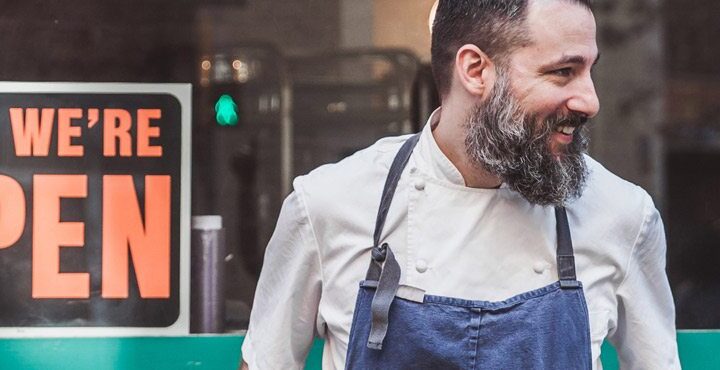GST/HST Reporting Requirements For Food Delivery Services

Hebatollah El-Kady
December 1, 2020 | 6 Min Read

The food delivery industry has taken a new toll in the past few years. Restaurants and grocery stores are shifting their delivery services from their own companies to a third party such as Uber Eats, Skip the Dishes, Just Eat, Instacart, DoorDash, Foodora, etc. These companies are called the invoicing carriers.
Definition of Carriers
The carrier is the person, corporation, organization, or business that supplies the freight transportation services from the suppliers to the final destination. They can either deliver the goods themselves or hire someone else to deliver them. The carrier is responsible for invoicing the customer and collecting the GST/HST from the supplier. The delivery driver or courier who actually delivers the goods to the customers, does not collect any GST/HST.
Self-employed Drivers
When working for a food delivery company, you are considered self-employed because you are free to carry out the duties as you please since you are contracted independently, not hired as an employee. You report your self-employment income on the T2125 – Statement of Business or Professional Activities form. Here you will claim your gross income from the business, deduct any expenses to calculate the net business income, and report the GST/HST paid if applicable. The net business income is reported on Line 13500 of your Income Tax and Benefit Return.
Taxes will be applied to the net business income, not the gross amount. And since you are contracted by the carrier and not employed by them as a salaried employee, the carrier will not withhold taxes from your income on your behalf. It is recommended to save at least 25% from your business earnings on the side for taxes owing by the time your file your income tax return.
GST/HST on Food Delivery
If your total income, before deducting expenses, is less than $30,000, you will be referred to as a small supplier, and you are not required to register for a business number or GST/HST account. Once the income passes the $30,000, the driver has to register for a GST/HST (QST in Quebec) account even for zero-rated supplies.
When dealing with zero-rated supplies as a food delivery driver, although you cannot collect GST/HST on the zero-rated supplies, you can register for the GST/HST and collect Input Tax Credit (ITCs) to recover the GST/HST paid on your own purchases and operating expenses. What this means is, although registering for a GST/HST account is optional for small suppliers earning less than $30,000, it is recommended to do so to be able to claim the ITCs on operating expenses.
If your business operation is in Quebec, you will have to register for a QST number and file an TP1 Income Tax Return with Revenu Quebec. Once you apply for the QST number, Revenu Quebec will contact CRA and apply for the GST/HST number automatically. If you already have a GST/HST and QST account for a prior business and it is still active, you can modify it from the “My Account for business”.
Courier service and Interlining Agreement
Services provided by food delivery companies are considered zero-rated interline freight courier services. The freight transportation service is the service of transporting goods (i.e. food and groceries). The courier services schedule and transport the supplies from the shipper to the customer but they are not in the business of making those supplies.
Food delivery companies are considered the invoicing carrier and the service they provide is called courier services. And since the customer is invoiced by one party (i.e. Uber Eats) and not the suppliers directly, it will fall under the interlining agreement.
Courier services fall under zero-rated supplies, which means you collect taxes at a rate of 0%. In other words, you don’t collect any GST/HST, however, you are able to recover any GST/HST paid by claiming Input Tax Credits (ITCs).
Examples of zero-rated goods or services are:
- Basic groceries but not snack foods
- Prescription drugs
- Exported goods and services provided outside of Canada
- Interline freight services
So the bottom line is: your duty as a driver working for a zero-rated interline freight courier service is:
- To Register for GST/HST account if your income is more than $30,000. Unless you voluntarily want to register when your income is lower.
- Not to charge the GST/HST since you provide interline freight services
- Claim ITCs on your business expenses only when you register for a GST/HST account.
Combining Income From Courier Services and Ride-Sharing
Some drivers have income from multiple activities such as food delivery and ride-sharing (i.e. Uber-Share, Lyft, etc.). It’s important to note that CRA considers these to be two different business activities and the tax reporting requirements differ for each one. Although GST/HST registration is not mandatory for courier services until your income surpasses the $30,000, income from ride-sharing is subject to GST/HST on the first penny you earn so registration is mandatory. There are different accounting methods to report taxes on ride-sharing income.
CRA will use the same GST/HST number for all business activities. Combining activities will change the requirement on when you should register your courier services. If the income from both activities is more than $30,000 combined, CRA extends the registration automatically to include the courier services even if the income from this activity alone is less than $30,000. On your GST/HST return to report the following:
- Taxable supplies income from both ride-sharing and food delivery on line 101
- GST/HST collected on ride-share income only (no GST/HST collected on food delivery income) on line 105
- Input Tax Credits (ITCs) claimed for both activities on line 106 and line 108
- Net tax on line 109
However, if the income from both activities is less than $30,000 combined, you report taxable supplies on the GST/HST return:
- Total taxable supplies income from ride-share only on line 101
- The GST/HST collected from ride-share on line 105
- ITCs claimed on ride-share expenses only* on line 106 and line 108
- Net tax
- You do not report the food delivery supplies income
- You do not claim ITCs on food delivery expenses
- *If you send a letter to CRA to extend the registration to include the food delivery, then you add the taxable supplies income on line 101 and claim the ITCs paid on lines 106 and 108
For example;
Joshua works for Uber under the ride-sharing activity. Regardless of his income, he is required to register for a GST/HST account right away and collect taxes. He also works with Skip-The –Dishes, so he is not required to register this activity unless the income from both Uber-Share and Skip-The-Dishes combined exceeds the $30,000. Let’s assume he earns $20,000 form Uber-Share and $15,000 from Skip-The-Dishes:
- Since the total income > $30,000 both activities will be registered
- He collects GST/HST on Uber-Share (on the $20,000)
- The income from Skip-The-Dishes is zero-rated so he doesn’t collect taxes (on the $15,000)
- He can collect ITC on capital and operating expenses for both activities
Here is a list of common purchases and expenses for which you may be eligible to claim ITCs:
- business start-up costs
- business-use-of-home expenses
- delivery and freight charges
- fuel costs
- legal, accounting, and other professional fees
- maintenance and repairs
- meals and entertainment (allowable part only)
- motor vehicle expenses
- office expenses
- rent
- telephone and utilities
- travel
The GST/HST rate collected depends on the province of the business. For example; if you are hired by Lyft in Quebec and live in Quebec, your self-employment address will be your personal address and the GST and QST rates will be 5% and 9.975% respectively.
Completing Your Income Tax and Benefit Return
Since activities from courier services and ride-sharing will be registered under the same GST/HST number, you complete one T2125 form with a combined income from all the activities. You use the industry code for the activity with the highest income.
For example;
Ben is working for Lyft and Instacart. His income from Lyft is $15,000 and his income from Instacart is $20,000. He should use the industry code for Instacart in his T2125 form.
If you have other business activities that are registered under a different business number, you file a separate T2125 form for it.
Visit this TurboTax link for more information on tax deductions for the self-employed.
Quebec residents have to apply for GST/HST and QST numbers. You only need to register for the QST number, the GST/HST number will be generated automatically.
To file your GST/QST return, you can either use the online express service or use the “My Account for business” website. To mail the return, you will need to fill the FPZ-500V form sent to you by Revenue Quebec, as it is not available online and must be mailed. However, a similar form can be filled using FP-500. This form cannot be mailed; it is a tool to help you prepare for the FPZ-500V when you receive it.
References:

Hebatollah El-Kady
Related articles

© 1997-2024 Intuit, Inc. All rights reserved. Intuit, QuickBooks, QB, TurboTax, Profile, and Mint are registered trademarks of Intuit Inc. Terms and conditions, features, support, pricing, and service options subject to change without notice.
Copyright © Intuit Canada ULC, 2024. All rights reserved.
The views expressed on this site are intended to provide generalized financial information designed to educate a broad segment of the public; it does not give personalized tax, investment, legal, or other business and professional advice. Before taking any action, you should always seek the assistance of a professional who knows your particular situation for advice on taxes, your investments, the law, or any other business and professional matters that affect you and/or your business.









